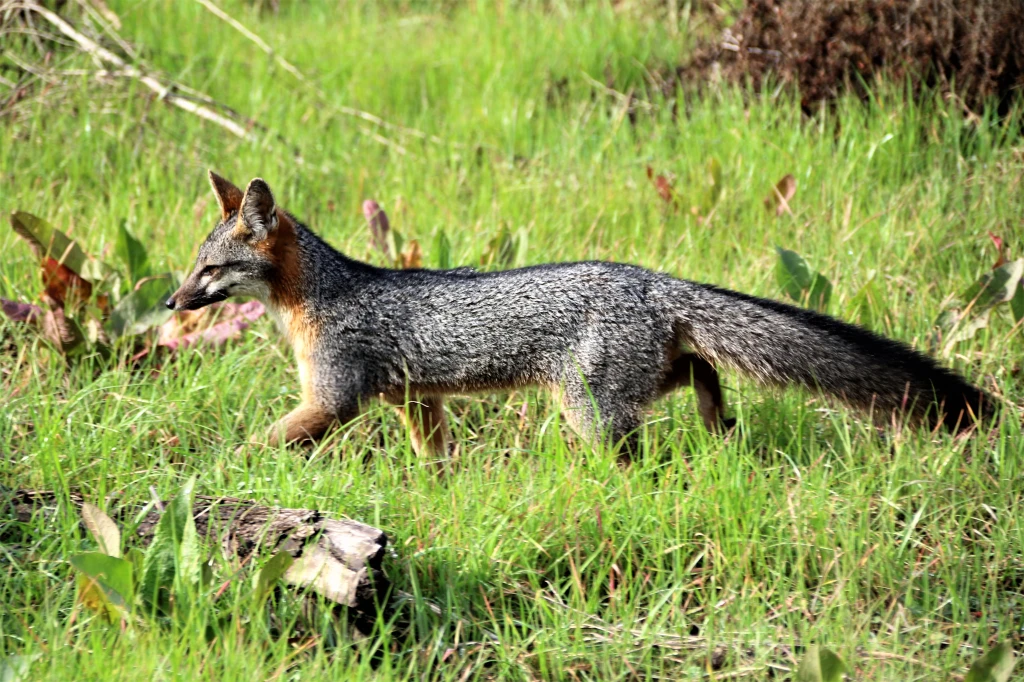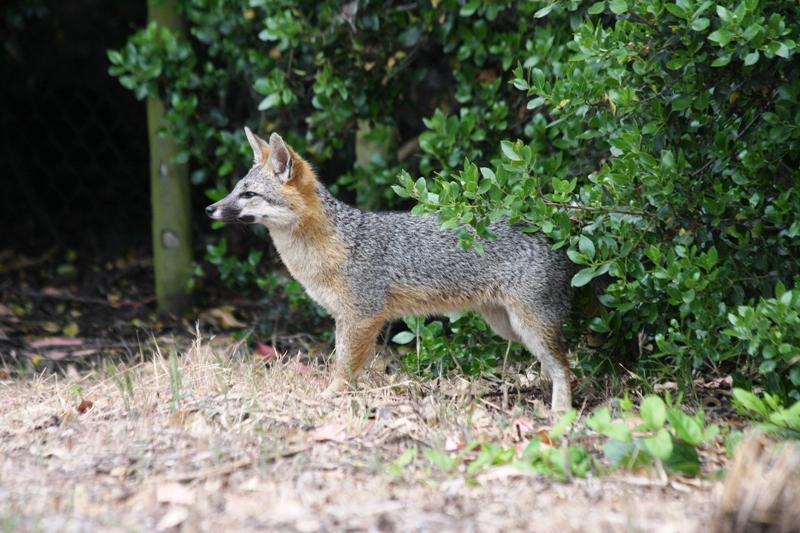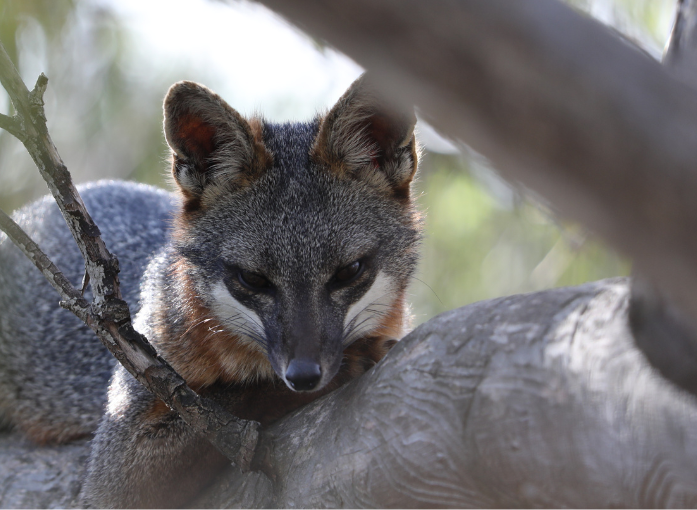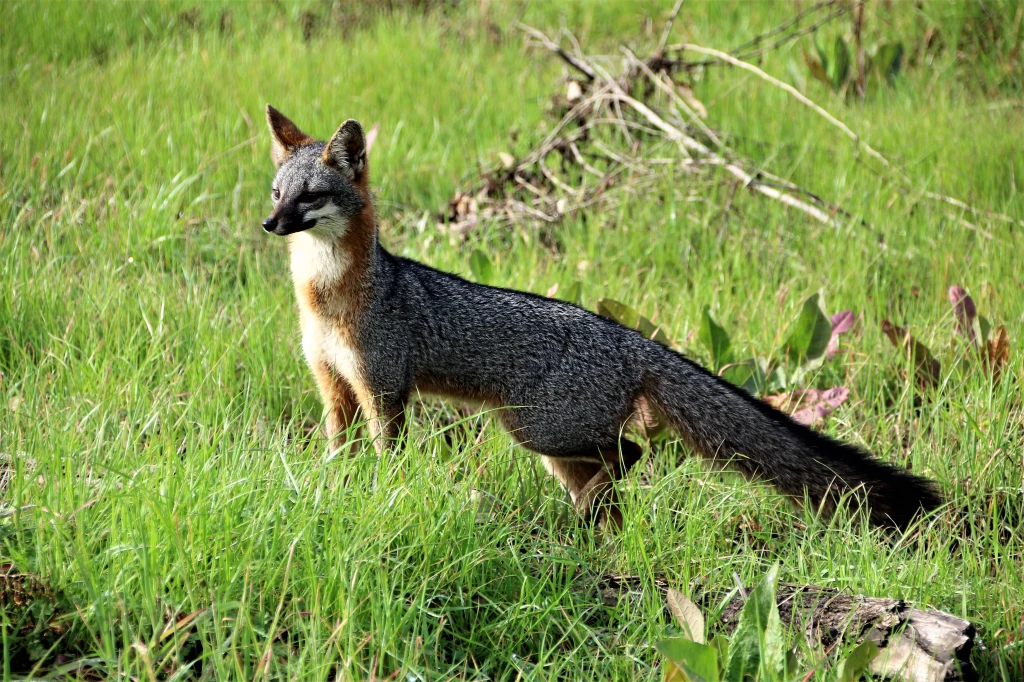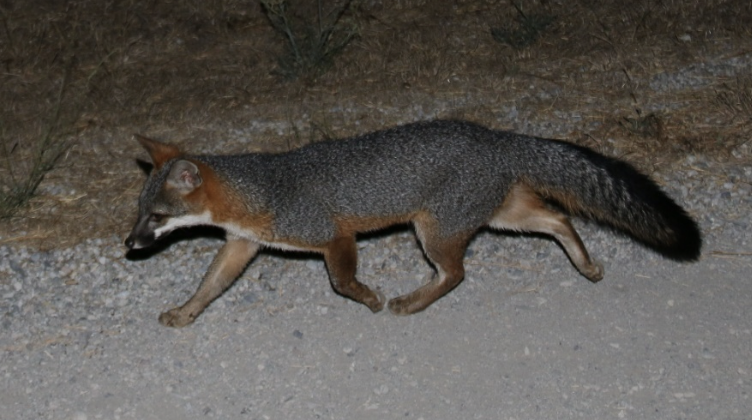Aftermath: What The Poacher Left Behind
by William C. Leikam
President, CEO & Co-founder, Urban Wildlife Research Project
Since there are no gray foxes at the Palo Alto Baylands Nature Preserve, I will continue substituting varied information about select events and the wildlife that make it home.
We are at a point in time where, in the Gray Fox Report, I cannot say where we stand concerning the absent gray fox. Expectations have gone unmet. Now, here in the latter part of January and into the first part of February, the gray foxes must pair up and occupy the land because if they are to have pups in April, the young pair needs time to establish their home range, prepare their natal den and locate the ripe hunting fields nearby. I see no concrete signs that they will do so at least for this year. Hopefully, I am wrong.
Preface:
Excerpt from Animal Consciousness: New Report Puts All Doubts to Sleep – A thorough summary of what we know shows skeptics ignore solid scientific data. Posted Jan 26, 2018 – By Dr. Marc Bekoff, Psychology Today – “It is thus likely that what matters to animals is rather similar to what matters to humans. We believe that human sentience is the capacity to suffer and to feel empathy for the suffering of others, and [that] deserves ethical recognition….” https://www.psychologytoday.com/blog/animal-emotions/201801/animal-consciousness-new-report-puts-all-doubts-sleep
About five nights later, a juvenile raccoon slowly came toward the trail camera. It moved as though it carried a heavyweight. Never before had I seen a young raccoon in that region look like that. Most of the time a juvenile hangs out with its siblings and they are generally chasing one another, or wrestling when not exploring. Most of the time too, mama raccoon will be nearby, but none of that transpired. The raccoon walked around in the clearing before my camera for just shy of 30 seconds and then it slowly passed on along the trail.
My impression brought back memories of five years ago when Dark Face, a young female gray fox, had been struck and killed on East Bayshore Road. After that happened, I noticed that her brother Bright Eyes was not himself. He too, like the young raccoon, was sluggish in his gait. He lay out in the grass during the day. When I approached, he hardly moved. He had lost his playfulness, his willingness to show that spark of life that he always had before the death of his sister. This odd behavior suggested that he was depressed because he no longer had that friend that he’d grown up with and had spent so many playful hours chasing and climbing trees in pursuit of the other. The poacher didn’t just kill five raccoons; most likely mama raccoon and four of her siblings, but he left behind a young depressed raccoon back there under the willow trees where my trail camera caught it on video, much the same as the gray fox pup Bright Eyes exhibited his depression.
Gray Foxes General Health
To date, no gray foxes at the Palo Alto baylands during January.
Total Numbers Of Gray Foxes in the Palo Alto Baylands Nature Preserve
None
Section II
Update for the Urban Wildlife Research Project
On November 28 in an article and published in the San Jose Mercury News titled “With elk on rebound, California releases new management plan: Wildlife experts say it’s time to expand, link and improve their scattered habitats”, I was quoted along with two others who are far more knowledgeable than I. You can read the article at http://www.mercurynews.com/2017/11/27/with-elks-on-rebound-california-releases-new-management-plan/
The following are events that Greg and I have been invited to present to. Contact us for more information. wcleikam@gmail.com
-
- Next public presentation by Bill “The Fox Guy” Leikam: A Year with the Urban Gray Fox – Henry Coe State Park, Pine Ridge group as their featured speaker on Saturday, Feb 3rd.
To find out more about us, search Urban Wildlife Research Project, UWRP, gray foxes, wildlife connection, linkages, corridors and several documentaries and clips on YouTube
-
- Check out our Facebook page.
-
- If you haven’t had a chance to read at least some of the articles that have been written about our study of gray fox behavior and our corridor work, click on these links as they will take you to the source: Bill Leikam – The Fox Guy, and Greg Kerekes & URWP
Section III
Gray Fox, Baylands Goals
Within the permit that allows the Urban Wildlife Research Project to conduct its study of the behavior of the gray fox at the Palo Alto Baylands Nature Preserve, the objectives covered area:
- Monitoring of urban gray fox Denning sites in Palo Alto Baylands.
This is being accomplished during the period when the gray foxes use a den site. It is one of the prime locations for gathering most of the behavioral data of the litter and for adults alike.
- Assessment of status and population trends of Baylands urban gray foxes
Since January 2019 a pair of resident gray foxes have claimed territory at the Palo Alto Baylands Nature Preserve.
- Identification of habitat features that promote the presence of urban gray foxes
After considering this and talking with people who know how to restore habitats, we need to assess what kinds of plants, including the Alkaline Salt Bush, would grow best along the edge of the saltwater channel and alongside the marsh. We need to grow a permanent habitat that contains the corridors and plant it as soon as possible. We’ll keep an eye on this as this is a critical link between the southern region of the Baylands and the northern region.
- Assessment of reproductive success and identification of factors that promote successful reproduction
Open up the pinch-point along Matadero Creek by developing thickets that link one area to another, instead of the present “islands”.
- Identification and assessment of possible dispersal travel routes.
Presently there can only be guesses as to dispersal travel routes. We intend to make this important question much more concrete when we attain our collaring/take/capture permit from the Department of Fish & Wildlife.

